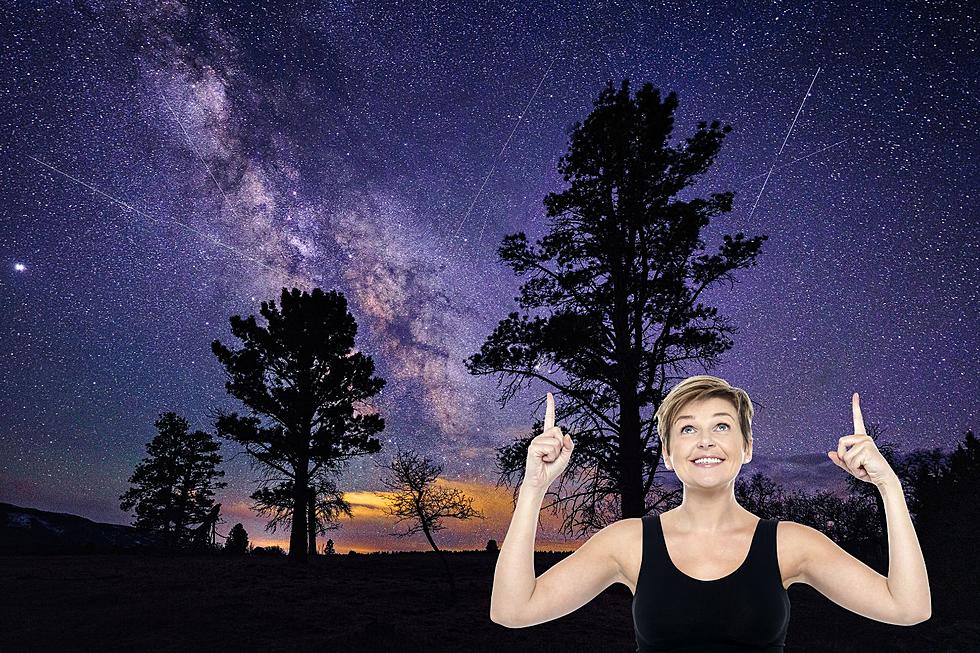
Look Up to See the Lyrids Meteor Shower Over Indiana & Kentucky This April
Those of us that love to look to the stars are in for a treat this month as one of the oldest known meteor showers lights up the sky.
More Than a Shooting Star
Often called shooting stars, meteors can be seen with the naked eye as they blaze through the night sky, but what exactly is a meteor, and what makes a meteor shower? According to NASA, meteors are nothing more than space rocks, and the friction created as it moves through the Earth's atmosphere generates heat. A lot of these rocks all at once are called meteor showers. The streak that you see across the night sky is actually just the glow of the air as the rock passes through.
That bright streak is not actually the rock, but rather the glowing hot air as the hot rock zips through the atmosphere.

Flying Rocks?
The idea of intergalactic rocks hurling toward Earth sounds a little scary, but NASA says that we really don't have anything to worry about since meteoroids are generally very small and burn up quickly. There is very little threat of one of them actually striking the planet.
How To Watch a Meteor Shower
You will want to find someplace away from the lights of the city. The darker the area you're in, the better. It can take nearly 20 minutes for your eyes to fully adjust to the dark, allowing you to see the night sky more clearly. Be sure you allow yourself time to acclimate to the dark and avoid other light sources like phones or flashlights. You don't typically need any additional gear or lenses to view most meteor showers either.
When To See A Meteor Shower
There are a number of meteor showers that take place over the course of a calendar year. The Geminids and Leonids meteor showers are two of the most well-known and they take place annually beginning around mid-November. Fortunately, we don't have to wait that long to see shooting stars soon.
April 2023 Meteor Shower
While I don't think this is what they meant when they said "April showers bring May flowers," the meteor shower taking place this month should be absolutely stunning. It is, after all, one of the oldest known meteor showers. According to NASA, the first recorded sighting of the Lyridd meteor shower was in 687 BC.
The Lyrids meteor shower, which peaks during late April, is one of the oldest known meteor showers. The Lyrids have been observed for 2,700 years. The first recorded sighting of a Lyrid meteor shower goes back to 687 BC by the Chinese.
The Lyrids Will Be Active in April
The Lyrids will be active from April 15th through April 29th but the meteor shower will be at its peak in the evening and early morning hours of April 21st through 22nd. NASA suggests that you lay with your feet pointing east to watch the Lyrids. Fortunately, the moon will only be partially illuminated, allowing for optimum meteor viewing, according to Space.com.
The Lyrid meteor shower occurs between April 16-25 every year and will peak on the night of April 22, 2023. Viewing opportunities are favorable for the 2023 Lyrids for the waxing crescent moon will be just 6% illuminated on the night of the peak.
How Many Meteors Can We Expect to See with the Lyrids?
While the Lyrids don't produce as many meteors per hour as some of the other showers throughout the year, you can expect 10 to 20 per hour and EarthSky.com says the Lyrids are known for "uncommon surges" that can sometimes cause up to 100 meteors per hour!
What To Know Before You Go Watch a Meteor Shower
Before you head out to watch the meteor showers, it is a good idea to have an idea of a safe place to view them, particularly if you won't be viewing them from your own backyard. You'll want to be sure that you don't inadvertently find yourself trespassing while trying to get a good view of the night sky. And, since it is the midwestern, bug spray might be a good idea before you head outside. However and wherever you end up stargazing, I hope when you see one of the meteors that you pause to enjoy the magic of the moment and don't forget to make a wish.
LOOK: 23 astronomical events to look out for in 2023
LOOK: 31 breathtaking images from NASA's public library
More From WKDQ-FM









